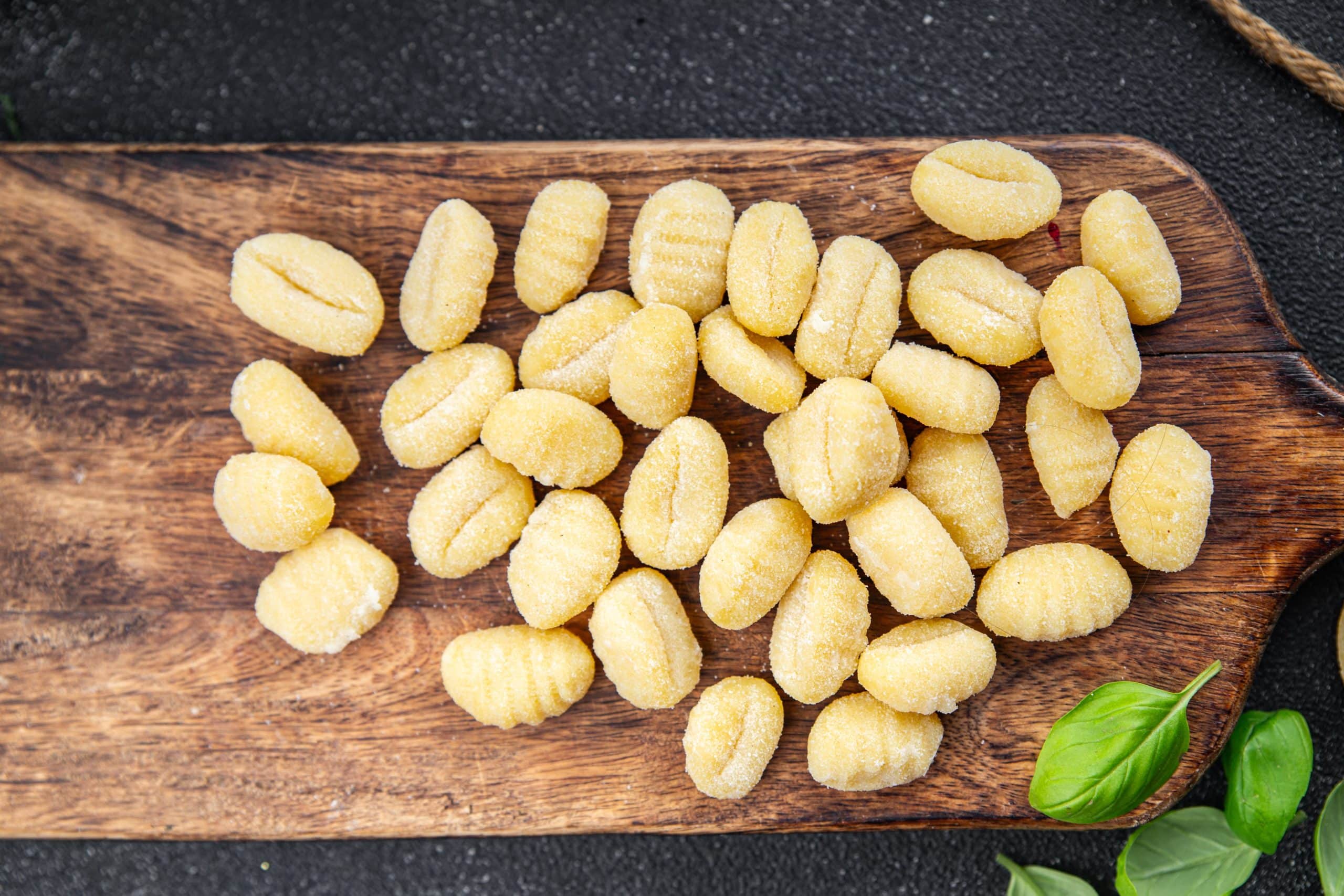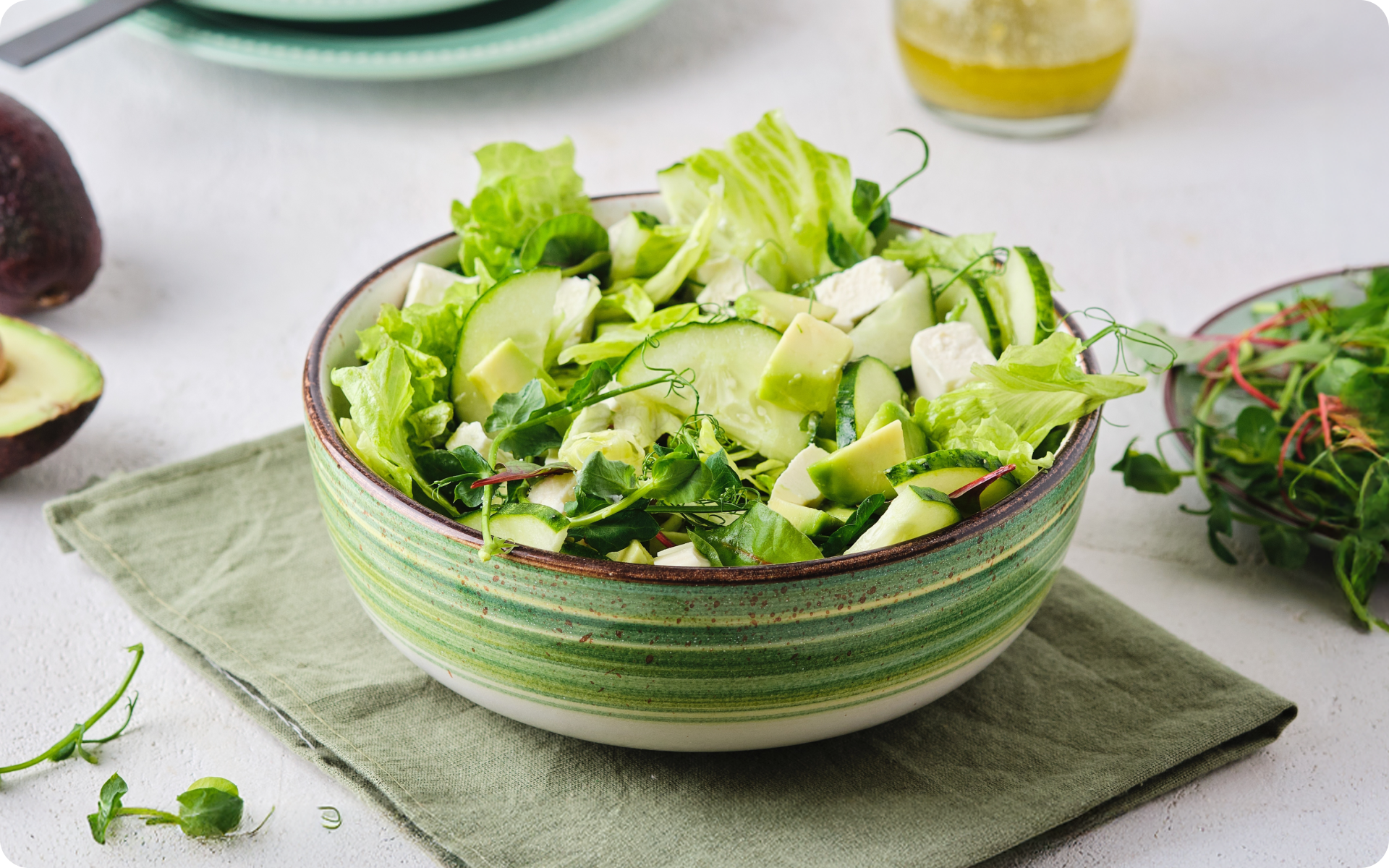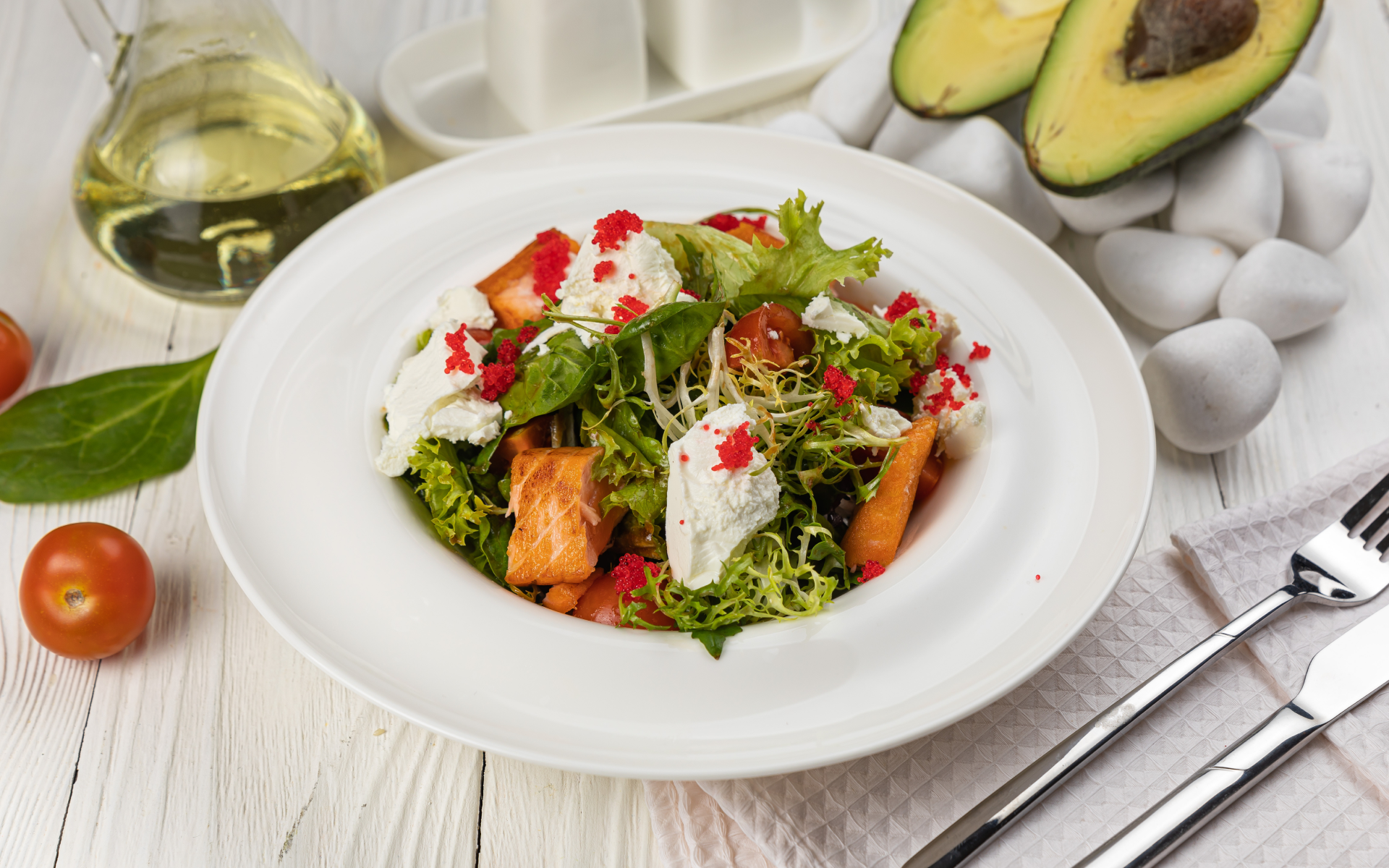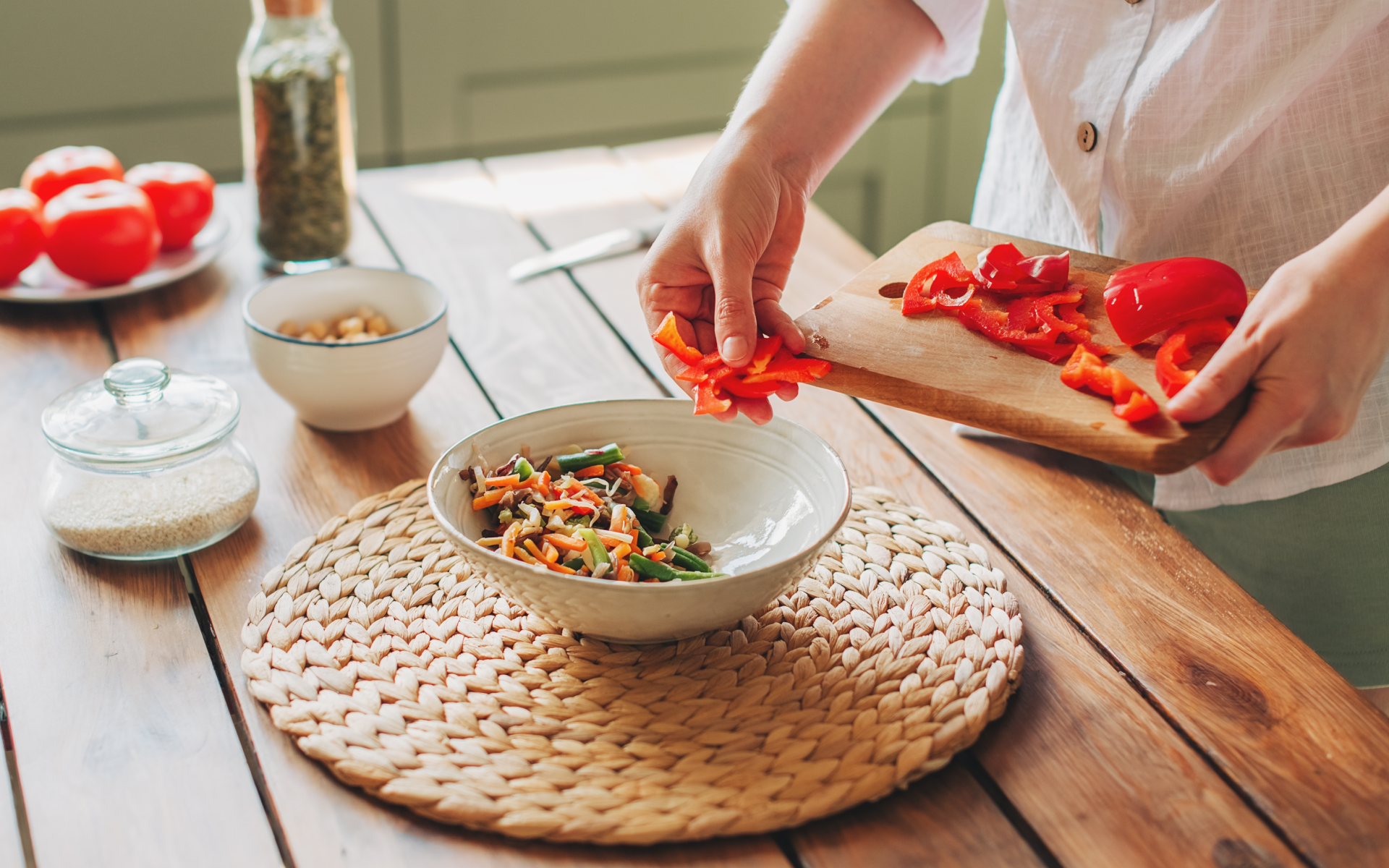If food is an accepted love language, then the dumpling is one of its most cherished expressions. Around for centuries, the dumpling has taken different forms in different countries, each one with its own rich legacy and inimitable taste.
While food historians still debate its origins, unique dumplings have evolved in the past several years and they have become a part of global cuisine. One such evolutionary path is the keto dumpling.
Although physically reminiscent of regular dumplings, keto dumplings are a low-carb alternative that’s ideal for those on a keto wellness journey. Using nutritious low-carb ingredients like oat or coconut flour for the skin, and vegetables and protein for the filling creates the perfect keto dumpling that’s tasty yet low on calories.
Before we deep-dive into the world of keto dumplings, let us take a closer look at what dumplings are and how they became an indispensable part of various diets around the world.
What Are Dumplings?
Whether you’re referring to the Japanese gyoza, the Italian ravioli, the Nepalese momo, or the Polish pierogi, dumplings are found across these cuisines and more.
According to conventional definitions, dumplings are “pastries filled with meat, vegetable, and flavorings like soy sauce, sesame oil, etc.” (7)
They are usually savory in taste and bring a punch of flavor from the marinade. Regular dumplings can be prepared through a number of cooking processes: They can be steamed, boiled, baked, or fried — either in hot oil or using an air-fryer.
In recent years, sweet fillings for dumplings have also become popular as people continue to rediscover and experiment with the traditional recipe. (9, 1)
The History Of The Dumpling: Origins And Popularity
Food historians are divided on the origins of the dumpling and have had an ongoing debate for decades.
Two main theories suggest points of origin in either China or Central Asia, and they both draw on the etymological roots of mantou, the Chinese word for dumpling. (5)
The first theory suggests that dumplings originated in China and then moved across Central Asia, while the second theory focuses on Turkic origins. The spread of Chinese dumplings was hence the result of later interactions with their Western neighbors like Russia, Korea, and other parts of Eurasia.
Today, the reason why dumplings are popular is not just because of their delectable taste but also their inherent simplicity. Depending on their fillings, one can whip up several variants of dumplings.
Additionally, it is easy to incorporate dumplings into meal preps as they can be made and stored in big batches, and enjoyed whenever you’re craving a hot snack!
Restaurants around the world quickly picked up on these factors, creating fresh new flavors and combinations earlier unheard of. As more and more places began serving dumplings, it quickly ascended to celebrity status in the food world. (8)
Intense sweat sessions, working weight loss tips, lip-smacking recipes come in one package with the BetterMe app. And all of it is at your fingertips, start transforming your life now!
What Are Dumplings Made Of?
Dumplings come in different shapes and sizes while also varying in their ingredient list.
However, what they all have in common is a dough, usually wheat-based and unleavened, that wraps a filling, usually meat-based. The most common fillings are mutton, chicken, beef, and pork.(2)
The flour is bound with an egg and then simmered in water or gravy stock until it takes on a light cakey texture. Many recipes call for herbs, onions, grated cheese, or chopped meat to be rolled into the dough before cooking.
How Many Calories Are In Homemade Dumplings?
The calorie content in homemade dumplings varies based on the specific recipe and ingredients used. However, as a general estimate, traditional homemade dumplings contain 40 to 60 calories per dumpling.
This amount can change based on factors such as the type of dough, filling ingredients, and cooking method. Keep in mind that if you’re making keto dumplings, the calorie count might be lower or higher, due to the use of low-carb alternatives in the dough and filling.
It’s recommended that you calculate the exact calorie content based on your specific recipe and ingredients for accurate nutritional information.
What Are The Types Of Dumplings?
Dumplings are of various different kinds. Take a look at what some dumplings around the world include:
- Chinese – Wonton, Dimsum
Chinese wonton, usually served in soups, are filled with noodle pockets. Oriental Dim Sums are typically filled with a combination of shrimp, pork, beef, and vegetables and flavored with soy.
- Korea – Mandu
Expect familiar Korean ingredients such as tofu, bean sprout and kimchi in the shell, with the addition of beef in more expensive alternatives. They could be steamed or boiled in broth. We have already spoken about whether kimchi is keto in an article before.
- Nepal – Momo
Typical fillings would include vegetables and beef. Some special varieties even use cheese, potato, or other local ingredients. Momo is renowned for the dipping sauce it’s served with. Sauces made with curry and chili are popular in the region.
- Italy – Filled Pasta
The more popular types of ravioli and tortellini feature a mixed filling of ground meat and cheese.
- Russia – Pelmeni
Pelmeni is undoubtedly a meat lover’s delight, employing beef, lamb, pork, venison, and sometimes a mix of everything.
- Poland – Pierogi
It can be fried or boiled, stuffed with meat, potato, sauerkraut, and other savory and sweet ingredients, though sour cream is rarely missed as a condiment.
- Uzbekistan – Manti
Typical fillings include dumba (local fat-tailed sheep), onion, potato, and other seasonal vegetables. (2)
When it comes to keto dumplings, the main filling is protein i.e. vegetables and meat, while the pastry is made from low-carb flour like oat, coconut, or almond flour.
Read more: Is Quinoa Keto-Friendly?
Are Dumplings Good For A Diet?
Like all other foods, no meal is good for the body if eaten in excess. The same applies to dumplings as well. The deciding factors here would be
- The ingredients used
- The type of cooking process employed
- How much is consumed i.e. portion size
For dumplings to be healthy and/or keto-friendly, they need to be using the following methods of preparation:
- Steamed dumplings are the best option in terms of fat content, with pan-fried being the next best. Deep-fried is the worst form you can opt for.
- The quality of the meat filling can also affect the healthiness of dumplings. Lean proteins like turkey, chicken breast, and tenderloin, among others, are better low fat fillings.
- The vegetable content or lack thereof is also crucial for knowing whether or not dumplings are a healthy food option. Including cabbage, spinach, mushrooms, onions, garlic, etc is a wise option when preparing healthy or keto dumplings.
- The salty sauces we drown our dumplings in are also something to be careful of, as the fillings in dumplings can often already be quite salty in themselves. (3)
Healthy Keto Dumpling Recipes
While one can make dumplings with the fillings of their choice, it is always better to have some easy dumpling recipes to swear by for quick snacks.
Easy Almond Flour Dumplings for Chicken Stew
(8 to 10 medium-sized dumplings)
Ingredients:
- 1 cup almond flour
- 2 tbsp coconut flour
- 1 tsp baking powder
- 1/2 tsp salt
- 2 tbsp melted butter
- 1/3 cup unsweetened almond milk
- 1 egg
Instructions:
- Mix almond flour, coconut flour, baking powder, and salt in a bowl.
- Incorporate melted butter into the dry mixture until it resembles the form of coarse crumbs.
- In a separate bowl, whisk together almond milk and an egg.
- Pour the wet ingredients into the dry mixture, stirring until just combined. Let the dough rest.
- Simmer your chicken stew until it’s hot and ready for the dumplings.
- Scoop portions of the dough into small balls, dropping them into the simmering stew. Cover and cook for 15-20 minutes until dumplings are firm.
- Once dumplings are cooked through, remove from heat and serve hot, optionally garnished with fresh herbs. (4)
Nutritional Information: (Per Dumpling)
Calories: 75
Fat: 6g
Carbohydrates: 2g
Protein: 3g
Fiber: 2g
Steamed Keto Dumplings with Pork Filling
(8 to 10 medium-sized dumplings)
Ingredients:
- 1 cup almond flour
- 1 tbsp coconut flour
- 1/2 tsp baking powder
- 1/2 tsp salt
- 1 tbsp sesame oil
- 1/2 lb ground pork
- 2 green onions, chopped
- 1 tsp minced ginger
Instructions:
- Combine the almond flour, coconut flour, baking powder, and salt in one mixing bowl.
- Add sesame oil, ground pork, green onions, and ginger. Mix into a filling.
- Form small dumplings and steam for 15-20 minutes till the dumplings are slightly translucent.
- Serve the steaming hot dumplings with soy or fish sauce or your preferred dipping sauce.
Nutritional Information: (Per Dumpling)
Calories: 70
Fat: 5g
Carbohydrates: 2g
Protein: 4g
Fiber: 2g
Keto Dumplings with Spinach and Feta Filling
(8 to 10 medium-sized dumplings)
Ingredients:
- 1 cup almond flour
- 2 tbsp coconut flour
- 1 tsp baking powder
- 1/2 tsp salt
- 2 tbsp melted butter
- 1/3 cup unsweetened almond milk
- 1 egg
- 1 cup fresh spinach, chopped
- 1/4 cup feta cheese, crumbled
Instructions:
- Mix the almond flour, coconut flour, baking powder, and salt in a bowl.
- Add melted butter, almond milk, and egg. Mix into a dough.
- Fold in chopped spinach and crumbled feta for the filling.
- Shape into dumplings and steam until firm.
- Optionally, saute using melted butter for the dumplings to take the form of spinach and feta potstickers.
Nutritional Information: (Per Dumpling)
Calories: 80
Fat: 6.5g
Carbohydrates: 2.5g
Protein: 3g
Fiber: 2g
Whether you’re looking to simply pep up your fitness routine, jazz up your diet with mouth-watering low-calorie recipes or want to get your act together and significantly drop that number on your scale – BetterMe app has got you covered! Improve your body and revamp your life with us!
Keto Dumplings with Chicken and Herbs
(8 to 10 medium-sized dumplings)
Ingredients:
- 1 cup almond flour
- 2 tbsp coconut flour
- 1 tsp baking powder
- 1/2 tsp salt
- 2 tbsp melted ghee
- 1/3 cup unsweetened almond milk
- 1 egg
- 1 cup cooked shredded chicken
- 1 tbsp fresh herbs (such as parsley or thyme), chopped
Instructions:
- Combine almond flour, coconut flour, baking powder, and salt.
- Mix in melted ghee, almond milk, and egg. Form a dough.
- Fold in cooked shredded chicken and fresh herbs.
- Shape into dumplings and boil or steam until cooked through.
Nutritional Information: (Per Dumpling)
Calories: 85
Fat: 7g
Carbohydrates: 2.5g
Protein: 4g
Fiber: 2g
Keto Dumplings with Spicy Beef Filling
(12 to 15 medium-sized dumplings)
Ingredients:
- 1 1/2 cups almond flour
- 1 tsp xanthan gum
- 1/4 tsp salt
- 1 large egg
- Water (as needed)
- 1/2 lb ground beef
- 1 tsp chili powder
- 1/2 tsp cumin
- 1/4 cup diced bell peppers
Instructions:
- Mix almond flour, xanthan gum, and salt in a bowl.
- Add egg and enough water to form a dough.
- Roll out portions into wrappers for spicy beef dumplings.
- Mix ground beef with chili powder, cumin, and diced bell peppers.
- Fill dumplings and steam until cooked.
Nutritional Information: (Per Dumpling)
Calories: 55
Fat: 4.5g
Carbohydrates: 1.5g
Protein: 3g
Fiber: 2g
Caribbean Fish Stew with Whole Wheat Dumplings
(8 to 10 whole wheat dumplings)
This is a healthy Caribbean recipe.
Ingredients:
For the Fish Stew:
- 1 lb white fish filets (snapper or cod), cut into chunks
- 1 cup cherry tomatoes, halved
- 1 bell pepper, sliced
- 1 onion, finely chopped
- 2 cloves garlic, minced
- 1 can (14 oz) coconut milk
- 1 cup vegetable broth
- 1 lime, juiced
- 1 tablespoon coconut oil
- 1 teaspoon thyme, dried
- 1 teaspoon paprika
- Salt and pepper to taste
- For the Whole Wheat Dumplings:
- 1 cup whole wheat flour
- 1/2 cup water
- 1/2 teaspoon baking powder
- 1/4 teaspoon salt
- 1 tablespoon chopped fresh cilantro (optional)
Instructions:
Fish Stew:
- Heat coconut oil in a large pot over medium heat. Add onions and garlic, sauté until softened.
- Add bell peppers, cherry tomatoes, thyme, and paprika. Cook for 5 minutes.
- Pour in coconut milk and vegetable broth. Bring to a gentle simmer.
- Add fish chunks and lime juice. Season with salt and pepper. Simmer for 10-15 minutes until the fish is cooked through.
- Adjust seasoning and remove from heat.
Whole Wheat Dumplings:
- In a bowl, combine whole wheat flour, baking powder, and salt.
- Gradually add water and stir until a dough forms. Fold in chopped cilantro if using.
- Divide the dough into small portions and shape into dumplings.
- Drop the dumplings into the simmering stew.
- Cover and let them cook for an additional 10-15 minutes until the dumplings are cooked through.
- Serve the Caribbean fish stew with whole wheat dumplings hot, garnished with additional fresh cilantro if desired. This dish combines the vibrant flavors of the Caribbean with the heartiness of whole wheat dumplings for a nutritious and satisfying meal. (10)
Nutritional Content (Per Serving):
Fish Stew (1 serving):
Calories: 350
Protein: 25g
Fat: 20g
Carbohydrates: 15g
Fiber: 3g
Sugars: 4g
Whole Wheat Dumplings (2 dumplings, assuming six servings):
Calories: 90
Protein: 3g
Fat: 3g
Carbohydrates: 15g
Fiber: 2g
Sugars: 1g
Almond Flour Dumplings with Chicken and Spinach
(8 to 10 whole wheat dumplings)
Ingredients:
For the Dumplings:
- 1 cup almond flour
- 2 tbsp coconut flour
- 1 tsp baking powder
- 1/2 tsp salt
- 2 tbsp melted butter
- 1/3 cup unsweetened almond milk
- 1 egg
For the Filling:
- 1 cup cooked shredded chicken
- 1 cup fresh spinach, chopped
- 1/4 cup grated Parmesan cheese
- Salt and pepper to taste
Instructions:
- In a bowl, combine almond flour, coconut flour, baking powder, and salt.
- Mix in melted butter, almond milk, and egg to form a dough.
- In a separate bowl, mix shredded chicken, chopped spinach, Parmesan cheese, salt, and pepper.
- Shape the dough into dumplings and stuff with the chicken and spinach mixture.
- Boil or steam until dumplings are cooked through.
- Serve hot with a drizzle of olive oil.
Nutritional Content (Per Serving):
Calories: 260
Protein: 18g
Fat: 16g
Carbohydrates: 10g
Fiber: 5g
Sugars: 2g
<a href=”https://quiz.betterme.world/en/first-page-generated-gender?flow=2171&utm_source=Blog&utm_medium=Blog&utm_campaign=keto_dumplings”><img class=”aligncenter wp-image-30039 size-large” src=”https://cdn.betterme.world/articles/wp-content/uploads/2023/11/101.png” alt=”keto dumplings” </a>
Keto Dumpling Wrappers with Beef and Broccoli
(12 to 15 medium-sized dumplings)
Ingredients:
For the Dumpling Wrappers:
- 1 1/2 cups almond flour
- 1 tsp xanthan gum
- 1/4 tsp salt
- 1 large egg
- Water (as needed)
For the Filling:
- 1/2 lb thinly sliced beef
- 1 cup broccoli florets
- 2 tbsp soy sauce
- 1 tsp sesame oil
- Instructions:
Instructions:
- Mix almond flour, xanthan gum, and salt in a bowl.
- Add egg and enough water to form a dough.
- Roll out portions into wrappers for beef and broccoli dumplings.
- Fill with thinly sliced beef, broccoli, soy sauce, and sesame oil.
- Steam until dumplings are cooked through.
- Serve with additional soy sauce for dipping.
Nutritional Content (Per Serving):
Calories: 250
Protein: 16g
Fat: 15g
Carbohydrates: 12g
Fiber: 5g
Sugars: 3g
Read more: 5 Keto Cheeses That Make the Cut and Which Ones Don’t
Steamed Keto Dumplings with Pork and Cabbage
(8 to 10 whole wheat dumplings)
Ingredients:
For the Dumplings:
- 1 cup almond flour
- 1 tbsp coconut flour
- 1/2 tsp baking powder
- 1/2 tsp salt
- 1 tbsp sesame oil
- 1 egg
For the Filling:
- 1/2 lb ground pork
- 1 cup shredded cabbage
- 2 green onions, chopped
- 1 tsp minced ginger
- 1 tbsp soy sauce
Instructions:
- Combine almond flour, coconut flour, baking powder, and salt.
- Add sesame oil, ground pork, shredded cabbage, green onions, ginger, and soy sauce. Mix into a filling.
- Form small dumplings and steam for 15-20 minutes.
- Serve with additional soy sauce for dipping.
Nutritional Content (Per Serving):
Calories: 220
Protein: 14g
Fat: 15g
Carbohydrates: 9g
Fiber: 4g
Sugars: 2g
Keto Dumplings and Turkey (without Xanthan Gum)
(12 to 15 medium-sized dumplings)
Ingredients:
For the Dumplings:
- 1 1/2 cups almond flour
- 1/2 cup coconut flour
- 1/2 tsp baking soda
- 1/2 tsp salt
- 3 large eggs
- 1/4 cup melted butter
For the Filling:
- 1/2 lb ground turkey
- 1/4 cup diced bell peppers
- 1/4 cup chopped fresh parsley
- Salt and pepper to taste
Instructions:
- Mix almond flour, coconut flour, baking soda, and salt.
- Incorporate eggs and melted butter. Mix until a dough forms.
- In a separate bowl, mix ground turkey, diced bell peppers, chopped parsley, salt, and pepper.
- Shape into dumplings and add to your preferred stew or soup.
- Simmer until dumplings are cooked through.
Nutritional Content(Per Serving):
Calories: 270
Protein: 22g
Fat: 18g
Carbohydrates: 11g
Fiber: 3g
Sugars: 2g
These diverse keto dumpling recipes offer a variety of flavors and fillings, ensuring a delightful experience for both meat lovers and vegetarians alike.
<a href=”https://quiz.betterme.world/en/first-page-generated-gender?flow=2171&utm_source=Blog&utm_medium=Blog&utm_campaign=keto_dumplings”><img class=”aligncenter wp-image-30039 size-large” src=”https://cdn.betterme.world/articles/wp-content/uploads/2023/11/16.png” alt=”keto dumplings” </a>
FAQs
Can You Use Plain Flour For Dumplings?
Yes, plain flour can be used for making dumplings. However, for a low-carb alternative like keto dumplings, it is recommended to use low-carb flour like almond, coconut, oat flour.
Are Dumplings Full Of Carbs?
While regular dumplings might be higher in carbohydrate content, low-carb alternatives do exist in the market. The carb content in them arises primarily from the flour used in the dough. If you’re following a low-carbohydrate or ketogenic diet, traditional dumplings may not be the most suitable option.
However, for low-carb and keto-friendly dumplings, the ingredients used include almond flour, coconut flour, or other low-carb substitutes. These alternatives can significantly reduce the carbohydrate content while still providing a similar texture and taste.
What Are Some Unhealthy Risks Of Eating Dumplings?
While eating dumplings can be extremely satisfying, they might not always be the healthiest meal. All foods can be incorporated into a healthy balanced diet in moderation. However, a few things to keep in mind about dumplings include:
-
High in Calories and Fat:
Regular dumplings are made with refined flour and filled with high-fat ingredients which inevitably become calorie-dense. Consuming excessive calories without considering overall dietary intake may contribute to weight gain.
-
Sodium Content:
Many commercial or pre-packaged dumplings, as well as restaurant versions, may be high in sodium. The sauces they are dipped into are often high in sodium as well. An excess of sodium in the diet can contribute to hypertension (high blood pressure) and increase the risk of cardiovascular issues. (6) -
Fried Foods:
The fried version of dumplings can increase the calorie and fat content significantly. The frying process adds extra calories and unhealthy fats. -
Quality of Ingredients:
The nutritional content of dumplings also depends on the quality of the ingredients used. If dumplings are made with high calorie and/or high fat fillings, it can impact the overall nutritional profile. -
Dietary Restrictions:
For individuals with certain dietary restrictions, such as gluten intolerance or wheat allergies, traditional dumplings made with wheat flour can be problematic. Choosing alternatives like gluten-free or low-carb flour might be the way forward.
Are Dumplings Good For Diabetics?
Traditional dumplings usually utilise refined carbohydrates which in turn can cause spikes in blood sugar levels. Additionally, portion size, ingredients used, as well as the method of preparation play a vital role in determining if dumplings can affect diabetes control for an individual. Talk to your healthcare provider for individualized advice.
The Bottom Line
In a nutshell, keto dumplings are not just low in calories and carbohydrate content, they can be made to be extremely flavourful and delicious. Swapping out wheat flour for keto-friendly alternatives, using lean protein as fillings, and steaming or boiling the dumplings all go a long way when wanting to enjoy this tasty snack.
SRI R Krist
DISCLAIMER:
This article is intended for general informational purposes only and does not serve to address individual circumstances. It is not a substitute for professional advice or help and should not be relied on for making any kind of decision-making. Any action taken as a direct or indirect result of the information in this article is entirely at your own risk and is your sole responsibility.
BetterMe, its content staff, and its medical advisors accept no responsibility for inaccuracies, errors, misstatements, inconsistencies, or omissions and specifically disclaim any liability, loss or risk, personal, professional or otherwise, which may be incurred as a consequence, directly or indirectly, of the use and/or application of any content.
You should always seek the advice of your physician or other qualified health provider with any questions you may have regarding a medical condition or your specific situation. Never disregard professional medical advice or delay seeking it because of BetterMe content. If you suspect or think you may have a medical emergency, call your doctor.
SOURCES
- Around Asia in six sweet dumplings (2022, lifestyle.livemint.com)
- Around the World in 8 Dumplings (2018, guide.michelin.com)
- Dumplings: Are They Healthy Or Not? (2015, huffpost.com)
- Keto Chicken and Dumplings (ketofocus.com)
- RE-ENVISION: Dumplings (esearch.appetitesg.com)
- Sodium Intake and Hypertension (2019, ncbi.nlm.nih.gov)
- The Best Keto Chinese Dumplings (carbmanager.com)
- The fascinating world of dumplings (2019, indiatoday.in)
- What Is The Origin Of Golden Syrup Dumplings? (thedonutwhole.com)
- White-Fish Stew with Dumplings (2021, marthastewart.com)











